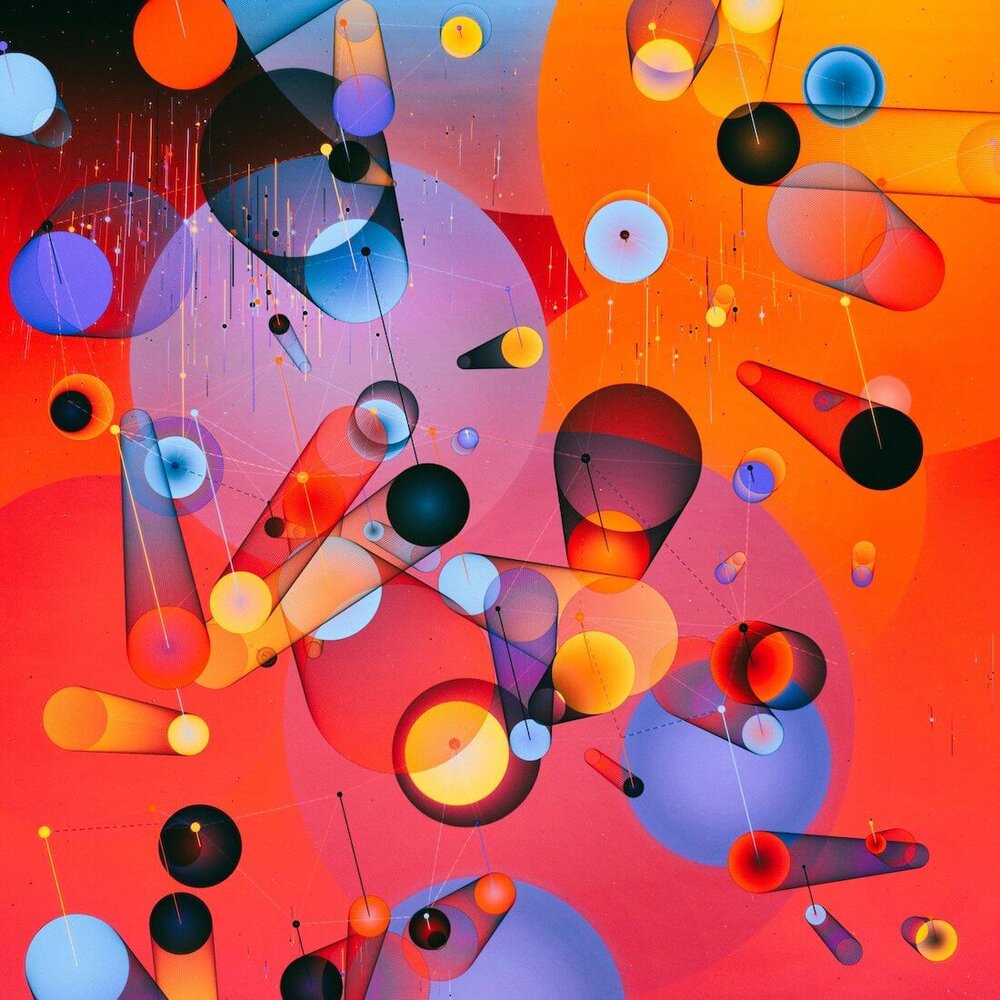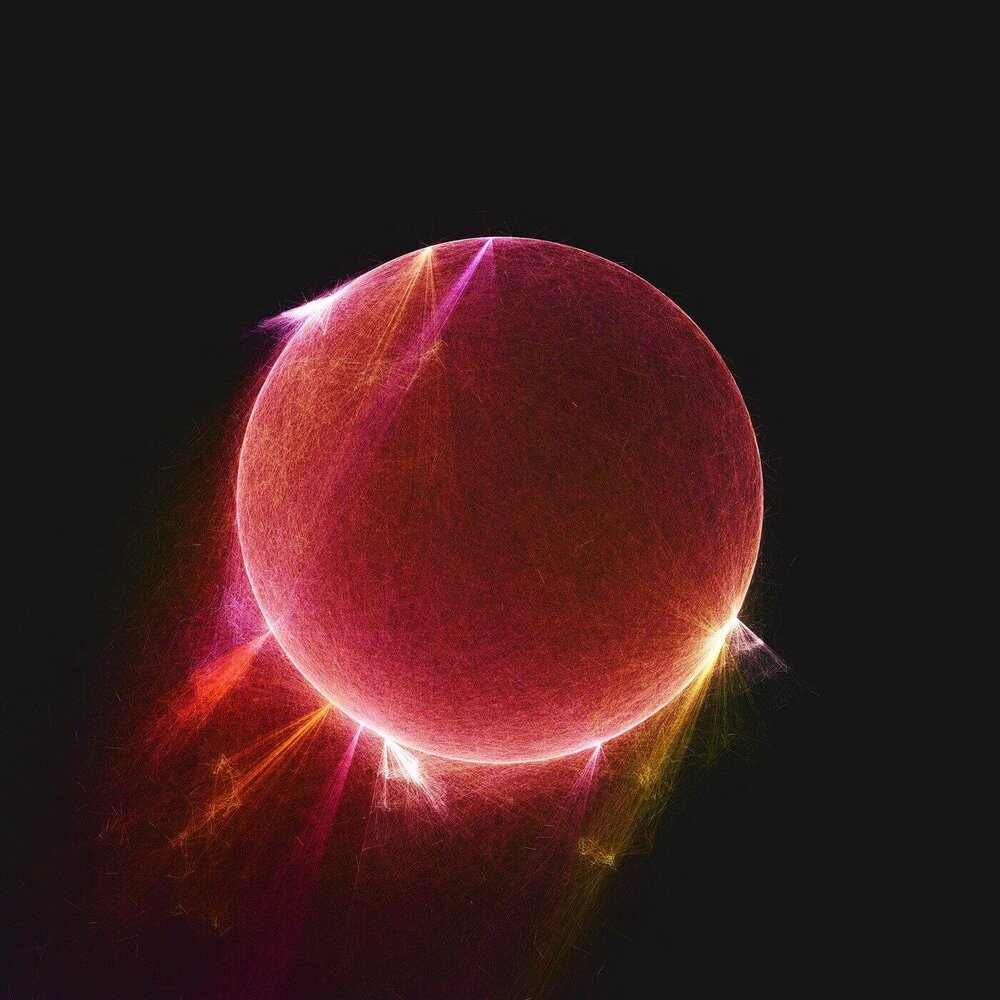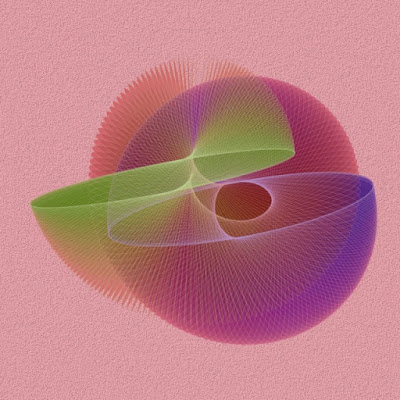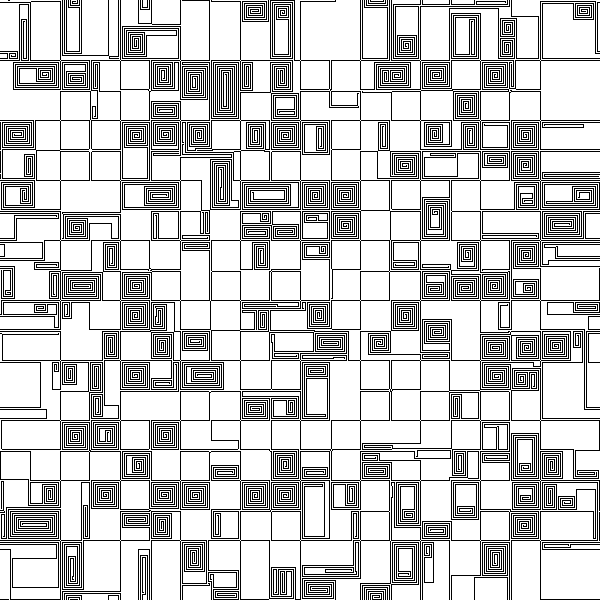Originally posted on Substack
“Any great art work … revives and readapts time and space, and the measure of its success is the extent to which it makes you an inhabitant of that world - the extent to which it invites you in and lets you breathe its strange, special air.” - Leonard Bernstein
Generative Systems to Generative Aesthetics
All of my life, art has been a piece of my existence.
In that timeline, there have been a few blips where the stars have aligned and the encounter has brought great awe.
A few of these experiences came when first encountering Jackson Pollock and the enormous pieces of dissonance, the sacred notes of Mozart’s Lacrimosa, and the words of T. S. Eliot’s The Waste Land as he tells of “winter keeping us warm.”
All of these pieces have had an impact in different ways, and they left their footprints on my memories. Thus to this day, it is a fascination of mine to explore the landscape; digging and searching for the nuggets of experience that create a deeper meaning. And as I curate this newsletter and work on pieces of my own I ask myself how generative art can also hold the torch of masterpieces.
How does generative art fit into the picture?
First lets break generative art into two pieces:
- generative aesthetics the aesthetic characteristics of a generated piece of art
- and a generative system used to create a piece of art.
As I continue to read and ponder, generative art has been mainly associated with the generative system side for most of almost 60+ years of existence.
The first public sightings of generative art occurred in the mid-1960s by the likes of Nees showcasing works that may be considered cold and mathematical pieces. This may be due to the technical skill as a barrier of entry. Due to the skills needed, much of the brain cycles were used to create the generative system rather than spending time on the aesthetic nature of art.
And looking at history this may be correct. Think the progression of cave paintings to Rembrandt. There was a progression over time where we saw the complexity and aesthetics increase over time. Some of it is due to the purpose of the art of the time. For the cave paintings, it was a way to memorialize and remember events where Rembrandts time, paintings were precursors of photographs.

Fast forward to 2021 we now have access to computers, computer power, languages, and frameworks and we are starting to see the aesthetics becoming increasingly part of the works that the generative systems. Is it progression of time? Is it now more accessible to the artist or is the field still dominated by the more technically minded? Tyler Hobbs’ thoughts in 2018 were,
Because of our (generative artists’) backgrounds, we take the easier route of considering our work in primarily technical terms. This is detrimental to generative artwork. This is part of the reason why it has languished for decades, and why the vast majority of people don’t even know it exists.


In essence, most generative artists come from technical backgrounds and we need to start considering the generative aesthetic as well. There is another layer underneath the generative system that has been untapped.
But what is generative aesthetic?
Well, aesthetic is a set of principles that align with what makes something beautiful. Simply this is where we go back to where we started. How do we get generative works of art that have reactions beyond, “that’s cool.” to pieces that can stand next to the Michaelangelo’s Sistine chapel. Pieces that inspire a new generation of artists to want to imitate, to protest, to inspire works that take art to yet another level? What is the search for the equivalent to the Sistine Chapel?

At this point, I don’t have a good answer. I think my search through the beginnings of generative art will help at least solidify my understanding of its history which is always a good basis to be able to push into new realms.
And this is one of the goals of this newsletter. I want to see generative art push itself into spaces that it hasn’t gone. The technique is important, and as you find most of the newsletter has a lot of the “how-tos”. I do look forward to coming across pieces of work that will push us into a new space.
But maybe I’m on an island of one, yet I really would love to see us continue to forge ways into the aesthetics and push ourselves into the pain of creating masterpieces. I want to someday be speechless by the work that comes from generative art.
Inspirations




🖌️ Unconventional Media

A Taxonomy of Generative Poetry Techniques
We describe computer-generated poetry techniques in the categories of mere generation, human enhancement, and computer enhancement, and argue that the artificial intelligence techniques used by computer scientists are artistically yelevant. We also generalize this taxonomy to computer-generated music.
John Whitney - Experiments in motion graphics 1968 - Generative graphics
{{ youtube jIv-EcX9tUs }}
John Whitney, Sr. (April 8, 1917 – September 22, 1995) was an American animator, composer and inventor, widely considered to be one of the fathers of computer animation.
🏛️ Exhibits / Installations

Generative Unfoldings
Curated by Nick Montfort, poet and MIT professor of digital media, the Generative Unfoldings exhibition consists of fourteen generative software artworks, running live in the browser. They were commissioned by the MIT Center for Art, Science & Technology (CAST) and co-presented by the MIT Trope Tank in conjunction with the 2021 CAST Symposium, “Unfolding Intelligence.” Read more.
🚤 Motion

Reaction Diffusion to image (jit.gl.pix)
A neat little experiment using Reaction - Diffusion and images created in Max. This is just a great springboard into the underbelly of Max and its use cases. Its not near as popular as TouchDesigner in this space, however I think it proves to be a tool that can be used for much of the same things with alot of utility.
🔖 Articles and Tutorials

The Most Important Functions of Art
Within art, there exist purposes referred to as functions for which a piece of art may be designed, but no art can be “assigned” a function—either in scholarly studies or casual conversation—outside of the proper context. Art forms exist within very specific contexts that must be considered when classifying them. Whether a particular piece of art has existed for centuries or has yet to be created, it is functional in some way—all art exists for a reason and these reasons make up the functions of art.
{{ youtube X150LMZy7uY }}
Generative Art, SVG, and Celestine - Raw Crystal 2020
talk about procedural art using Crystal and an SVG shard, redcodefinal/celestine. After a basic introduction to SVG and Celestine, I will break down a few different generative art techniques such as RNG, Perlin/Simplex noise, Gaussian distribution, and finally leave you with a process breakdown on how to make a basic piece of procedural art, as well as leveraging Celestine’s masking, filtering, and animation to make an endlessly unique animation.

How to make generative art?
I don’t want to make art with creative coding. I want to make a code that generates an artistic thing. And this is important, I don’t know what the art is. So, I’m not an artist. I am an engineer, I think.
I find the artist’s perspective to be an interesting read. Also, the rest of the site is filled with alot of Processing code that he has so kindly provided. Take some time and learn carefully what can be done. He has some fascinating systems that he’s provided to learn from.

Creative Coding with p5.js
Part 4 In this session, we will make our p5.js sketches interactive! Together with Morgan, we will work on the Generative Art Creator project using the p5.js web editor! We will make a tool to create, control, and combine generative works of art inspired by early media artists, such as John Whitney and Vera Molnar.…

Is Generative Art for You?
Visual generative art is an intriguing niche of the visual arts that makes use of an autonomous system, typically defined through code, to generate pieces of art. Although it has its roots at least in the 1950s, generative art gained traction with the technological advances of the last decades. Among hobby artists, generative art is perhaps of particular interest to creative-minded hackers who want to express themselves artistically in a structured way or just want to create pleasant imagery, using the skills they excel at.
Books

Ex Machina - Fruhe Computegrafik bis 1979
A comprehensive catalog appeared upon the occasion of Kunsthalle Bremen for the first time showing their recently acquired substantial collection. It consists actually of two separate collections, brought together over many years by Herbert W. Franke, himself a pioneer of computer art, an important author and theoretician of digital art, and a writer of science fiction novels (among other activities).
This piece seems to hold much of the early art (or at least the resources that I have found thus far) that I am slowly digesting in order to be able to understand the history and work that has been done up to this point in history.